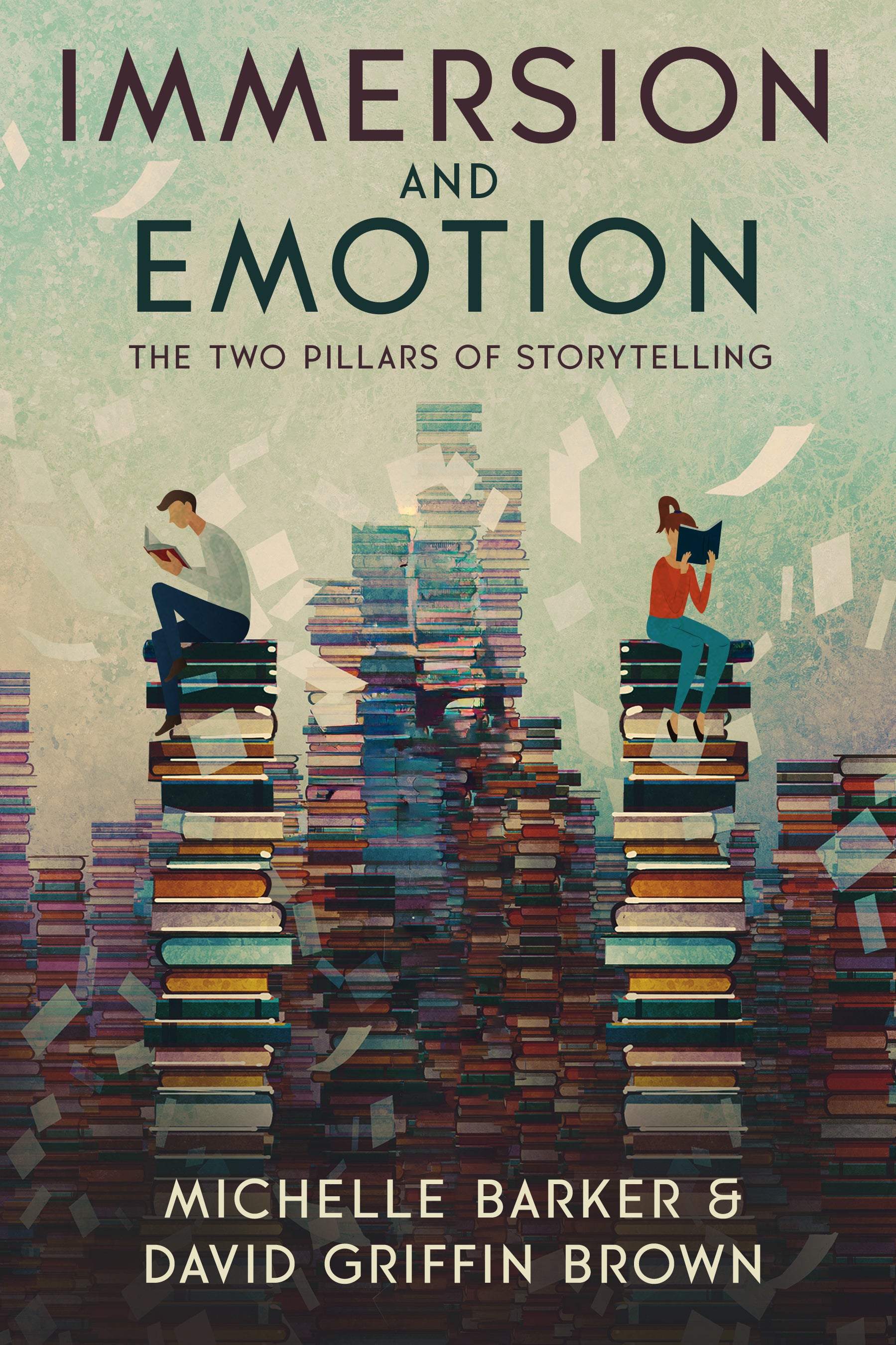Think Outside the Bot: AI Prompt-Crafting for Authors

By David Griffin Brown
In the rapidly evolving world of artificial intelligence, it turns out that the secret sauce to better AI outputs is, well, better inputs. Your friendly neighborhood chatbot works best when it clearly understands what you’re asking for. This post will explore different methodologies for crafting prompts that help writers use AI effectively as an aid in their creative processes, not as a crutch.
(Who’s your chatbot? Doesn’t matter if you’re using ChatGPT, Gemini, or something else. All prompt engineering thrives on rich context and specificity.)
1. RISEN Methodology
The RISEN method isn't just a handy mnemonic; it's a carefully designed framework for enhancing interactions with your AI, as crafted by Kyle Balmer. Known on TikTok as iamkylebalmer, he explores the RISEN framework on his channel. This method ensures that each interaction with your AI is purposeful and focused.
Here's a quick breakdown of what each letter stands for:
- Role: Define the role you want the AI to play. Is it an advisor, a storyteller, a researcher? This parameter helps guide the tone and approach of the AI’s response.
- Instructions: Clearly state what you need the AI to do. This could be generating ideas, providing information, or analyzing content.
- Steps: Outline the steps you expect the AI to follow. This can be particularly useful for complex tasks that require a sequence of actions.
- End goal: Specify what you aim to achieve with the AI's output. Knowing the ultimate purpose helps your chatbot tailor its response to meet your specific needs.
- Narrowing: Apply constraints to focus the AI’s creativity or scope of response. This helps prevent the AI from veering off-topic and ensures that the output is directly relevant to your needs.
Example Task: Creating a character backstory for a historical fiction novel
Generic Prompt: Give me a backstory for a bootlegger from the 1920s.
Specific Prompt Using RISEN:
- Role: I want you to act as a seasoned biographer
- Instructions: in crafting a detailed backstory for my bootlegger protagonist,
- Steps: beginning with his childhood in rural Oklahoma, through his involvement in World War I.
- End goal: The backstory should reveal his guiding motivations, worldview, and how the era shaped his personality.
- Narrowing: Focus particularly on pivotal events that influenced his views on freedom and prohibition.
By using the RISEN framework, the specific prompt leads to a richer, more contextually appropriate response that can inspire deeper narrative development. Guiding the AI through a structured process like this allows it to produce content that is not only detailed but also more aligned with your creative goals.
2. CLEAR Methodology
Diving into the CLEAR methodology is like setting the stage for a well-rehearsed play. Each element—Context, Length, Expectation, Audience, and Restrictions—acts like a distinct part of the production, ensuring every detail is precisely tuned. Unlike RISEN, which outlines the role and sequence of interaction with your chatbot, CLEAR focuses more on tangential context.
- Context: Sets the scene, giving the chatbot whatever background it needs to understand the scenario accurately.
- Length: Defines the scope, ensuring responses are neither too brief nor overly detailed.
- Expectation: Clarifies the format you expect the content to take.
- Audience: Tailors the tone and complexity, making sure the output resonates well with its intended readers.
- Restrictions: Places boundaries so the chatbot can avoid irrelevant or off-target content.
Example Task: Designing a setting for a fantasy novel
Generic Prompt: Describe a fantasy city.
Specific Prompt Using CLEAR:
- Context: Describe a world where magic intertwines with daily life
- Length: in a detailed paragraph
- Expectation: that highlights how living trees form the architectural backbone of the city,
- Audience: for a novel aimed at readers who love intricate world-building.
- Restrictions: Focus on the relationship between nature and technology and how governance is managed by the elders of the forest.
The CLEAR method helps fine-tune your prompt to get a richer response. But is it better or worse than the RISEN method? Try out prompts using both and see what you get.
3. SMART Goals
SMART isn't just a catchy acronym beloved by project managers everywhere; it can also sharpen your chatbot prompts. Originating from management theories developed in the early 1980s, notably in George T. Doran's paper on setting objectives, SMART Goals provide a framework that enhances clarity and focus in various settings, including interactions with generative AI.
- Specific: Pinpoints the exact requirement, reducing the chatbot’s guesswork.
- Measurable: Defines clear criteria for success by which you can evaluate the AI's response.
- Achievable: Ensures the response is more within your chatbot’s knowledge base rather than outputs produced via extrapolation.
- Relevant: Aligns the prompt with the broader goals of your project to ensure usefulness.
- Time-bound: Adds a temporal component for greater specificity.
Example Task: Generating detailed descriptions for a new setting
Generic Prompt: Describe the typical contents of a garage.
Specific Prompt Using SMART Goals:
- Specific: List specific items found in a mechanic’s garage in the 1950s,
- Measurable: including at least ten tools and three pieces of large equipment,
- Achievable: and make sure all items were actually available during the 1950s and commonly used for car repairs.
- Relevant: This description will help me paint a vivid setting in a historical novel about a classic car restorer.
- Time-bound: Include an additional paragraph describing this setting during the early morning.
By applying the SMART methodology, the prompt becomes a precision tool. It's like giving your chatbot a detailed blueprint of what you expect, which should result in a historically accurate and narratively useful description. This can save you hours on research and let you instead focus more on the drama of this mechanic's life.
4. The 5 Ws Method
Remember the basics of your high school journalism class? The 5 Ws aren't just for news reporters; they're also fantastic for getting your chatbot to function as a creative collaborator.
Example Task: Brainstorming a character’s attire
Generic Prompt: Describe what a young cybersecurity expert might wear.
Specific Prompt Using the 5 Ws:
- Who: A young woman working in cybersecurity
- What: needs three outfit options for a Tame Impala psychedelic rock concert
- When: that she’s attending after a high-profile tech conference presentation
- Where: at a popular downtown arena in New York City.
- Why: She wants to shift from her professional tech-savvy appearance to a more casual, retro-inspired look that expresses her creative side and love for vintage fashion.
Using the 5 Ws to craft your prompt transforms a simple question into a narrative exercise. It doesn’t just get you an outfit; it weaves the character’s identity into the response so you can better demonstrate her personality and unique style.
5. Specificity and Dialogue
Treat your chatbot like a colleague in a brainstorming session. It’s not just about throwing out a question and accepting the first response; it’s about engaging in a dialogue.
Example Task: Researching technological features of a historical period
Initial Generic Prompt: List some technologies from the early 20th century.
Revised Specific Prompt: Provide detailed descriptions of communication technologies available in the 1920s in America. Include how these technologies influenced daily life and business practices, and specify which social classes had access to them.
If the initial details provided are too broad or don’t sufficiently capture the nuances of the era, you might refine the prompt with, “Can you provide more specific examples of how telephones were used differently by businesses and households during the 1920s, and how this technology was perceived socially?”
Working with AI is a dynamic process. By being specific and engaging in an ongoing dialogue, you can shape your chatbot’s output to help you spark creativity and expand your narrative possibilities.
In Conclusion: Indispensable Humanity
While opinions vary widely on the role of generative AI in creative writing, it's crucial to remember that these tools are designed to augment, not replace, the indispensable human creativity at the heart of storytelling. As we've explored, structured methodologies like RISEN, CLEAR, SMART, and the 5 Ws can help level up your chatbot interactions, resulting in outputs that are more detailed, contextually sound, and aligned with your creative goals. Whether you're sketching out a new character, setting a scene, or plotting a narrative twist, remember that your unique voice and vision are what breathe life into your work. Play around with these tools, experiment boldly, and let AI elevate your creative journey without overshadowing your artistic voice.

David Griffin Brown is an award-winning short fiction writer and co-author of Immersion and Emotion: The Two Pillars of Storytelling. He holds a BA in anthropology from UVic and an MFA in creative writing from UBC, and his writing has been published in literary magazines such as the Malahat Review and Grain. In 2022, he was the recipient of a New Artist grant from the Canada Council for the Arts. David founded Darling Axe Editing in 2018, and as part of his Book Broker interview series, he has compiled querying advice from over 100 literary agents. He lives in Victoria, Canada, on the traditional territory of the Songhees and Esquimalt Nations.






